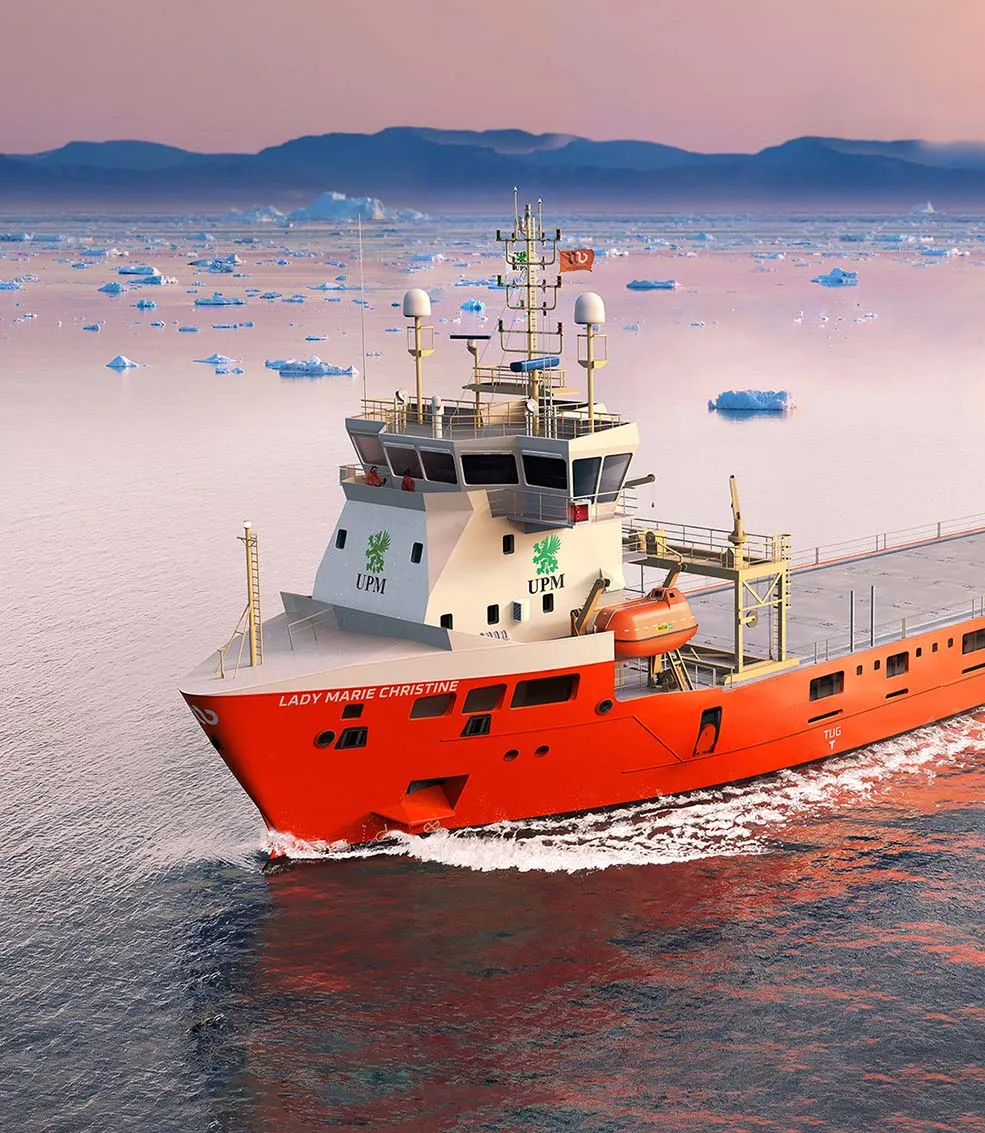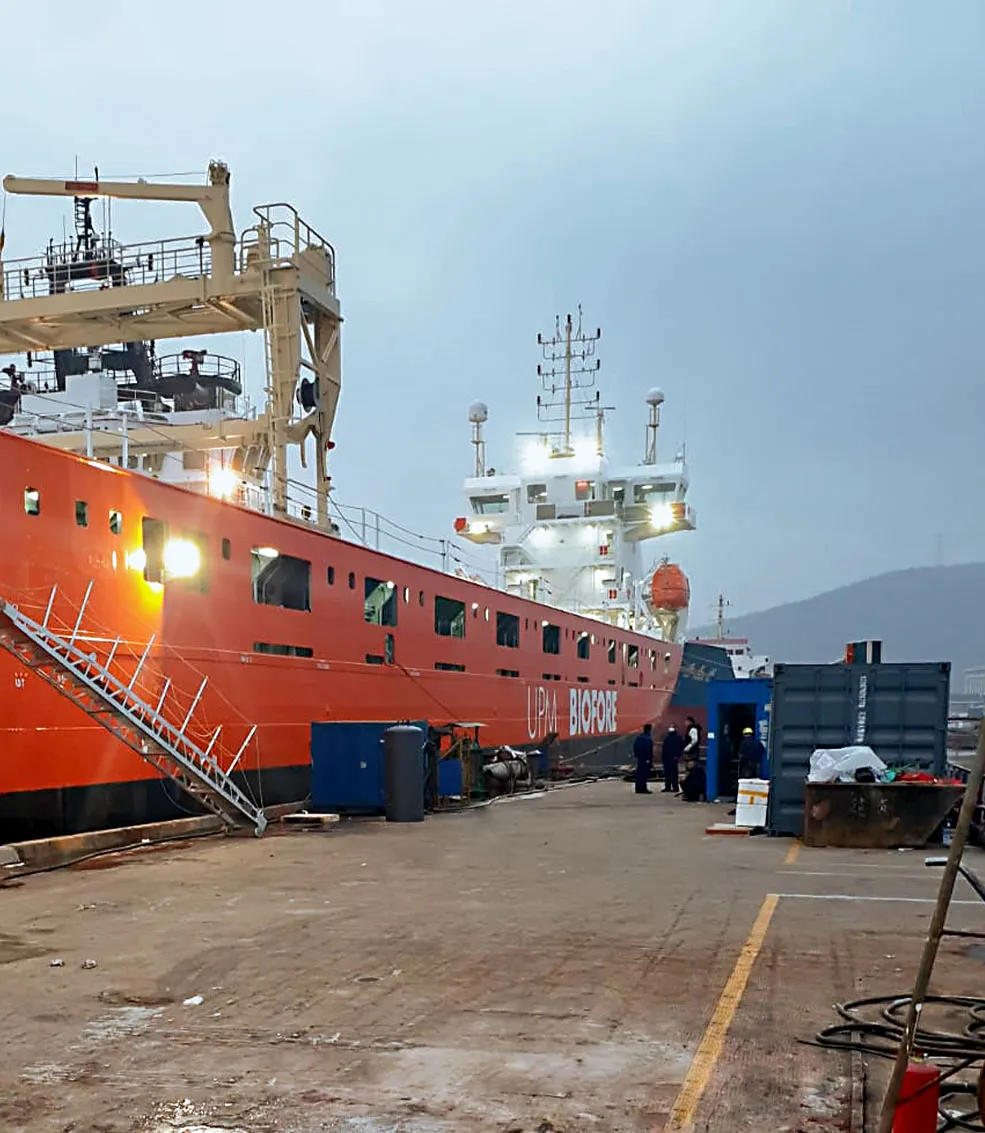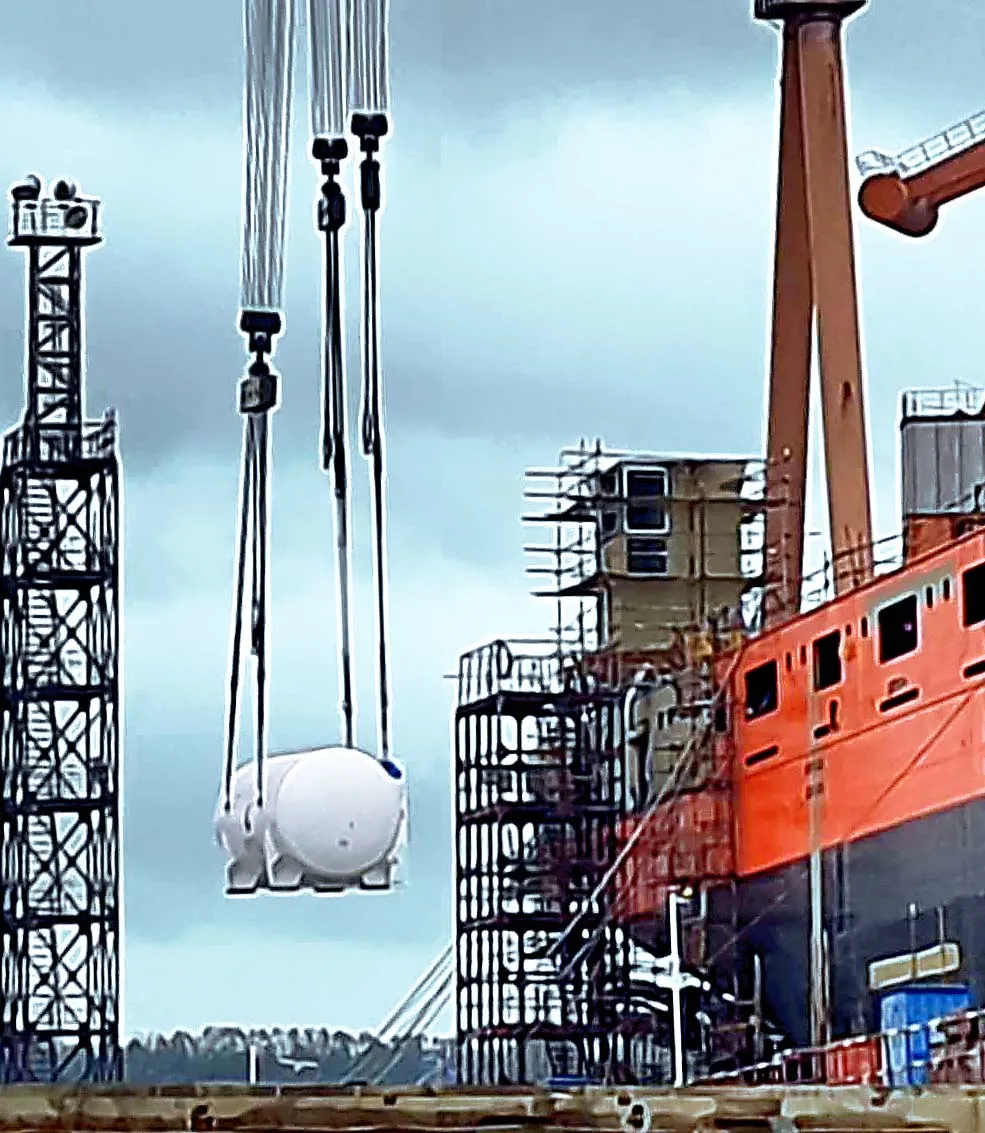Highly flexible, LNG dual-fuel MPV excels with low EEDI
The first delivery in a series of LNG dual-fuel multipurpose dry cargo vessels (MPV) marks a turning point in European short-sea shipping: Lady Marie Christine shows how state-of-the-art design features can ensure that long-term emission targets will be met.

Combined efficiency enhancements result in very low EEDI
Lady Marie Christine features an array of state-of-the-art efficiency enhancements which put her and her sister vessels on a good track to meet the IMO decarbonization goals towards 2050: a dual-fuel engine designed to run on LNG as well as conventional marine diesel oil; hull lines optimized to minimize resistance in water in conjunction with a controllable-pitch nozzle propeller; an optimized propulsion train and a frequency-controlled, PTO-driven shaft generator allowing the main engine to run at optimum rotational speed and the propeller with optimum pitch; and a waste heat recovery system. The two redundant auxiliary engines are needed for the hotel load during port stays only. The combination of all these features allows the ship to achieve an excellent EEDI value of 6.87 g CO2/tNm against the required Phase 1 value of 16.07 g CO2/tNm – in other words, a value as low as 57,2 per cent of the required value.

Designed to decarbonize
Ad Toonen, Technical Manager at Wijnne Barends, stresses that the vessel series is designed to meet future environmental legislation without requiring substantial modification. “The interaction between the hull lines and the propeller arrangements is a key factor for the low fuel consumption,” he points out. LNG was chosen as the main fuel because of its low environmental impact and because it can be easily replaced by carbon-neutral bio-LNG in the future.

LNG as a plausible pathway into a green fuel future
“I had not fully realized the potential of the LNG concept until we discussed this in depth with DNV, and today I am fully convinced about it,” says Toonen. “To me, DNV is the top runner on the LNG topic. They have a lot of experience and a clear route into the future, and that is a good fit for our company. When we want to address other fuels, such as ammonia or methanol, we still see a bright future for this vessel and its fuel options. Bio-LNG will be the most plausible next step. As for other fuels, we will have to see what future rules will be implemented, then we will know better what can be done. But with the configuration of this ship we are two steps ahead in terms of being ready to meet future rules.”

Engineered cargo flexibility
“Lady Marie Christine and her sister ships, all of which will be delivered in 2022, are extremely versatile multipurpose vessels,” stresses Jost Bergmann, Business Director MPV & General Cargo Ships at DNV. “And in terms of efficiency enhancements and emission abatement, they go far beyond what is currently standard in the shipping industry.”
The Dutch ship design firm Conoship International was involved in the basic design and development of the Lady M series. As trusted long-term partners of the Spliethoff Group and many other stakeholders in short-sea shipping, the designers at Conoship are very familiar with the specific requirements of these short-sea MPVs, which primarily transport forestry products such as timber, pulp and paper for the long-term charterer UPM. “We were facing a challenging set of design requirements in this project,” says Jan Jaap Nieuwenhuis, Managing Director at Conoship International. “This led to an innovative and very fuel-efficient vessel with an extremely compact engine room, a large hold length and an impressive deck area.” Once Conoship had completed the design, Wuhu Shipyard continued with the detailed engineering.
To maximize the available cargo space and the variety of cargoes the Lady M series can carry, especially on deck, the vessels feature a forward deckhouse, which ensures an unobstructed view from the bridge, and a large deck space suitable for oversized cargo. The ships have DNV’s Hatchcoverless class notation and are certified for open-top operation at a 5.5 m draught to carry heavy and/or voluminous cargo which doesn’t fit into the cargo hold or is too heavy for on-deck carriage, says Ad Toonen.
“For the first couple of years these ships typically sail on quite a regular schedule along the same route. They spend 80 to 90 per cent of their time between the English Channel and the Gulf of Bothnia, going north one week and south the following week, always sailing during the weekends and loading and discharging on Monday, Tuesday or Friday. The LNG fuel tank capacity is designed for one two-week round trip; we mostly bunker in Finland,” Toonen explains.

Resolving the LNG tank location challenge
“Finding the best place for the LNG tank without sacrificing valuable cargo space was quite a challenge,” Toonen recalls. “Initially we considered placing two 100 m3 tanks on deck. Together with designer Conoship and DNV we discussed several alternative ideas and finally ended up with this innovative design idea of placing a single 200 m3 LNG tank below deck, which is quite an advantage from an operational point of view.” The tank is located on the port side of the vessel, close to the main engine, says Toonen. “When you stand next to the engine, the separate LNG tank compartment is just about one metre above you.” Special insulation and fire protection arrangements and a strengthened support structure ensure the safety of this design. “This was more or less the most discussed part of the vessel,” recalls Toonen.
The tank arrangement increases the available cargo space on deck by 25 per cent compared to similar vessels. This means that large project cargoes such as wind turbine blades with lengths over 80 m can be carried.

Proven cooperation partnership yields the best results
“At our first meeting with DNV in Hamburg I was quite impressed by all the experience that was directly available at the main office,” says Ad Toonen. “We discussed a variety of subjects and in each case we found ourselves speaking with a subject matter specialist within a couple of minutes – someone we could ask specific questions and who would give us the right answers. I am still impressed by that.”
The Lady M series features a number of DNV class notations, including the highest Swedish–Finnish ice class 1A for operation in the Baltic, the Gas Fuelled notation, various notations for the strengthened inner bottom, main deck and hatch covers allowing the ships to carry heavy cargo such as paper rolls, the Grab notation for the use of 20-ton grabs in discharging operations, the Hatchcoverless notation, and several others to maximize cargo versatility. The ships will sail under the Dutch flag.
“We want our customers to succeed in the long term,” emphasizes Jost Bergmann. “In particular, we make a point to support our customer’s decision in favour of LNG as fuel in pursuit of ambitious decarbonization goals. With these newbuilds, Wijnne Barends are taking on the role of a first mover in short-sea shipping.”
Keeping customers well informed during the newbuilding phase is always a priority at DNV, another aspect Wijnne Barends truly appreciate, says Ad Toonen: “We were able to communicate closely with DNV through the Veracity newbuild app. When we had a question on the status we’d get an answer within a few minutes. Soon Lady Marie Christine will arrive here and I have invited DNV on board to take a look and discuss further improvement ideas for our next newbuilding projects.”
Contact us
- Conoship
- Wijnne Barends
- Wijnne Barends
View image copyright information
